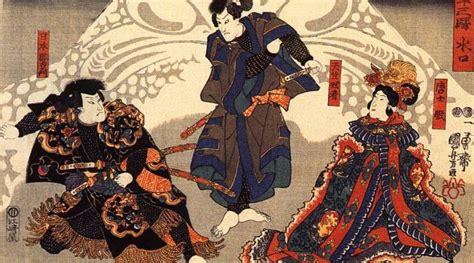Explore the early dynasties, Confucianism, Tang Dynasty, Mongol Invasions, and Qing Dynasty in this in-depth historical blog post.
Early Dynasties and Kingdoms
Contents
China’s history is as rich and diverse as its culture, with a legacy that spans over 4,000 years. The early dynasties and kingdoms of China laid the foundation for the country’s development and shaped its identity. From the legendary Xia Dynasty to the powerful Shang Dynasty, these ancient rulers established the first centralized governments and laid the groundwork for China’s imperial legacy.
The Xia Dynasty, said to be the first dynasty in Chinese history, is shrouded in legend and myth. According to ancient texts, the Xia ruled for nearly 500 years, and their reign was marked by advances in agriculture, bronze metallurgy, and writing. The Shang Dynasty followed, ruling over a vast territory and leaving behind a legacy of art, literature, and religion. The Shang rulers were known for their use of oracle bones, which were inscribed with divination texts and used to communicate with the spirit world.
Another significant era in Chinese history is the Warring States period, a time of political upheaval and military conflict. During this time, several powerful states vied for supremacy, leading to the eventual unification of China under the Qin Dynasty. It was during the Qin Dynasty that the Great Wall of China was constructed, a monumental feat of engineering that still stands as a testament to the ingenuity and determination of the Chinese people.
These early dynasties and kingdoms played a crucial role in shaping China’s cultural, political, and social landscape. Their achievements and innovations laid the groundwork for the dynasties that followed, leaving an indelible mark on China’s history and identity.
Influence of Confucianism and Taoism
Confucianism, founded by Confucius in the 6th century B.C., has had a profound influence on Chinese society and culture. Its emphasis on moral values, virtue, and social harmony has shaped the ethical and moral framework of Chinese civilization for over two millennia. Confucian teachings stress the importance of filial piety, loyalty, and respect for authority, which have been ingrained in the social fabric of the country.
Taoism, on the other hand, is a philosophical and religious tradition that emerged in the 4th century B.C. It emphasizes living in harmony with the Tao, or the Way, and advocates simplicity, spontaneity, and naturalness. The influence of Taoism on Chinese culture can be seen in practices such as feng shui, traditional Chinese medicine, and martial arts, as well as in the development of landscape painting and poetry.
Both Confucianism and Taoism have had a lasting impact on Chinese politics, art, literature, and philosophy. The influence of these two belief systems can still be observed in modern Chinese society, where traditional values, social hierarchy, and the pursuit of harmony continue to play a significant role.
Rise and Fall of the Tang Dynasty
The Tang Dynasty, often regarded as the golden age of China, was a time of great cultural and economic prosperity. Spanning from 618 to 907 AD, the Tang Dynasty was characterized by expansion and innovation. Under the Tang rulers, China saw significant territorial expansion, stretching its influence across Asia and establishing itself as a dominant power in the region.
One of the most significant contributions of the Tang Dynasty was the advancement of art, literature, and science. It was during this period that China experienced a cultural renaissance, with poetry and painting reaching unprecedented levels of mastery. This era also saw the invention of printing techniques and the invention of gunpowder, forever altering the course of human history.
Despite its cultural accomplishments, the Tang Dynasty eventually faced internal strife and external threats, leading to its downfall. Corruption within the government and rebellions from various regions of China weakened the once-great empire. Additionally, the invasion of the Xianbei and the Tibetans further destabilized the Tang Dynasty, ultimately leading to its collapse in 907 AD.
However, the legacy of the Tang Dynasty continues to influence China and the world to this day. Its cultural achievements and contributions to human civilization are still revered, and its decline serves as a reminder of the ephemeral nature of power and imperial glory.
Mongol Invasions and Yuan Dynasty
The Mongol Invasions of China in the 13th and 14th centuries were a significant event in Chinese history. Led by the formidable ruler Genghis Khan, the Mongols swept through China, establishing the Yuan Dynasty in 1271. This period marked a major shift in Chinese culture and governance, as the Mongols introduced their own customs and traditions to the region.
Under Mongol rule, China saw a significant increase in trade and cultural exchange across Eurasia. The Silk Road flourished during this time, as the Mongols facilitated trade and communication between East and West. Additionally, the Mongols promoted religious tolerance, allowing various faiths to coexist within the empire, including Buddhism, Christianity, and Islam. This diverse cultural landscape had a lasting impact on the development of Chinese society.
Despite these changes, the Mongol rule in China was not without challenges. The native Chinese population faced discrimination and oppression under the new regime, leading to widespread resentment and resistance. The Yuan Dynasty also struggled to maintain control over its vast territories, facing rebellions and uprisings throughout its rule. These internal conflicts, combined with external pressures from neighboring empires, ultimately led to the downfall of the Yuan Dynasty in 1368.
Despite its relatively short-lived reign, the Yuan Dynasty left a lasting legacy on Chinese history. Its impact on trade, culture, and religious tolerance shaped the region for centuries to come. The Mongol invasions and the subsequent Yuan Dynasty serve as a crucial chapter in the narrative of China’s evolution as a global power.
Qing Dynasty and the Last Emperor
The Qing Dynasty was the last imperial dynasty of China, ruling from 1644 to 1912. It was established by the Manchu people, who invaded and conquered China, effectively ending the Ming Dynasty. The Qing Dynasty was characterized by its adoption of Confucian ideology and its strict adherence to traditional Chinese customs and practices. During this time, China experienced significant economic and cultural growth, with advancements in art, literature, and technology.
However, the latter part of the Qing Dynasty saw a decline in power and influence, as China faced internal conflict, corruption, and pressure from foreign powers. The dynasty’s inefficiency and failure to modernize ultimately led to its downfall. The Last Emperor of the Qing Dynasty, Puyi, ascended to the throne at the age of two and witnessed the demise of the imperial system. His reign marked the end of thousands of years of dynastic rule in China.
The Xinhai Revolution of 1911-1912, led by nationalist forces, overthrew the Qing Dynasty and established the Republic of China. This marked the beginning of a new era in Chinese history, as the country transitioned from an imperial system to a republican government. The fall of the Qing Dynasty had a profound impact on China’s political, social, and cultural landscape, setting the stage for the rise of modern China.
In conclusion, the Qing Dynasty and the Last Emperor symbolize the end of an era in Chinese history. Their legacy serves as a reminder of the complexities and challenges of governing a vast and diverse nation, as well as the enduring resilience of the Chinese people.












